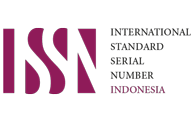Elementary school students' difficulties in reading at the beginning of English learning
Keywords:
Difficulty beginning to read, English, elementary school studentsAbstract
Especially for lower grade students, initial reading skills are very important and are the initial foundation for language skills, understanding all lessons, and the ability to convey information (in written and oral form). There are students who experience difficulty in reading the beginning when doing so. Learning to read is further hampered by this reading difficulty. This initial reading difficulty analysis research was carried out on class III students at SDN Ban Slampar 2. This research was carried out using a qualitative descriptive approach. Interviews, field notes, observations, and data collection methods were used. The results showed that beginning reading included difficulty recognizing letters, omitting or replacing letters, reading individual words, distinguishing between vowels and consonants, combining letters and syllables into one word, and ignoring punctuation
Downloads
References
Agusalim dan Suryanti. (2021). Konsep dan Pembelajaran Bahasa Indonesia Kelas Rendah. Pasuruan : Bintang Pustaka Madani (CV. Bintang Surya Madani).
Altarac, M., & Saroha, E. (2007). Lifetime prevalence of learning disability among US children. Pediatrics, 119(Suppl. 1), S77–S83. https://doi.org/10.1542/peds.2006-2089L
Anggraeni, Sri Wulan dan Yayan Alpian. (2020). Membaca Permulaan dengan Teams Games Tournament (TGT). Pasuruan : CV. Penerbit Qiara Media.
American Psychiatric Association. (2013). Diagnostic and statistical manual of mental disorders (5th ed.). American Psychiatric Association. https://doi.org/10.1176/appi.books.9780890425596
Benati, Alessandro. (2020). What is the Role and Nature of Language and Language Development?. Journal Language Teaching Research Quarterly.Vol. 20, 60–71.
Betthäuser, B. A., Bach-Mortensen, A., & Engzell, P. (2022). A systematic review and metaanalysis of the impact of the COVID-19 pandemic on learning. https://doi.org/10.35542/osf.io/d9m4h
Boland, R., Verduin, M. L., & Ruiz, P. (Eds.). (2022). Kaplan & Sadock’s synopsis of psychiatry (12th ed.). Wolters Kluwer.
Boon-yasidhi, V. (2021). จิตเวชศาสตร ์เด็กและวัยรุ ่ นในเวชปฏิบัติ[Child and adolescent psychiatry in clinical practice]. Department of Pediatrics, Faculty of Medicine, Siriraj Hospital Mahidol University.
Christianti, M. (2013). Membaca dan Menulis Permulaan Untuk Anak Usia Dini. Jurnal Pendidikan Anak, Vol. 2, No. 2.
Creswell, John. W. (2016). Research Design : Pendekatan metode kualitatif, kuantitatif, dan campuran. Yogyakarta: Pustaka Pelajar.
Hammerstein, S., König, C., Dreisoerner, T., & Frey, A. (2021). Effects of COVID-19-related school closures on student achievement—A systematic review. Frontiers in Psychology, 12, 4020. https://doi.org/10.3389/fpsyg.2021.746289
Harmer, Jeremy. (2002). The Practice of English Language Teaching 3rded. Malaysia : Longman.
Hasbrouck, J. & Tindal, G. (2017). An update to compiled ORF norms (Technical Report No. 1702). Eugene, OR, Behavioral Research and Teaching, University of Oregon.
Hidayah, dkk. (2021). Upaya Guru Dalam Mengatasi Kesulitan Belajar Membaca Permulaan Pada Siswa Kelas Bawah di MI BAHRUL ULUM SEKAPUK UJUNGPANGKAH GRESIK. JPMI : Jurnal Pendidikan Madrasah Ibtidaiyah. Vol. 3, No. 1.
Munthe, Ashiong P. (2018). Manfaat Serta Kendala Menerapkan Flash Card Pada Pelajaran Membaca Permulaan. JDP : Jurnal Dinamika Pendidikan. Vol. 11 No. 3, hlm.214.
Munirah, M. (2018). Peranan Guru dalam Mengatasi Kesulitan Belajar Siswa. TARBAWI: Jurnal Pendidikan Agama Islam, Vol. 3, No. 02, 113
Muammar. (2020). Membaca Permulaan di Sekolah Dasar. Mataram : Sanabil Creative.
Moleong, Lexy J. (2007). Metodologi Penelitian Kualitatif. Bandung: PT Remaja Rosdakarya.
Miles, M. B dan A. Michael Huberman. (1994). Qualitative Data Analysis. California: Sage Publications.
Martin, A., & Volkmar, F. R. (2007). Lewis’s child and adolescent psychiatry: A comprehensive textbook (4th ed.). Lippincott Williams & Wilkins.
Lestari, Nur E.I,dkk. (2021). Karakter Kedisiplinan Belajar Siswa Kelas V SDIT HIDAYATULLAH Di Desa Daren Selama Di Rumah. JIP: Jurnal Inovasi Penelitian. Vol. 2, No. 4.
Westwood, Peter. (2001). Reading and learning difficulties: approaches to teaching and assessment. Victoria : The Australian Council for Educational Research Ltd.
West, M., & Lake, R. (2021). How much have students missed academically because of the pandemic? A review of the evidence to date. Center on Reinventing Public Education. https://www. crpe.org/publications/how-much-have-students-missedacademically-because-pandemic-reviewevidence-date
Tunmer, W. E., & Hoover, W. A. (2019). The cognitive foundations of learning to read: A framework for preventing and remediating reading difficulties. Australian Journal of Learning Difficulties, 24(1), 75–93.
Thorn, W., & Vincent-Lancrin, S. (2021). Schooling during a pandemic: The experience and outcomes of schoolchildren during the first round of COVID-19 lockdowns. OECD Publishing. https://doi.org/10.1787/1c78681e-e
Susilo, Sigit Vebrianto. (2018). Refleksi Nilai-nilai Pendidikan Ki Hadjar Dewantara Dalam Upaya Upaya Mengembalikan Jati Diri Pendidikan Indonesia. Jurnal Cakrawala Pendas Vol. 4 No.1.
Sugiyono. (2015). Metode Penelitian Pendidikan Pendekatan Kuantitatif, Kualitatif, dan R&D. Bandung:Alfabeta
Sugiyono. (2010). Metode Penelitian Pendidikan. Bandung: Alfabeta.
sShaywitz, S. E., & Shaywitz, B. A. (2020). Dyslexia. In R. M. Kliegman & J. St Geme (Eds.), Nelson Textbook of Pediatrics (21st eds) (pp. 267–269). Elsevier.
Shah, H. R., Sagar, J. K. V., Somaiya, M. P., & Nagpal, J. K. (2019). Clinical practice guidelines on assessment and management of specific learning disorders. Indian Journal of Psychiatry, 61(Suppl. 2), 211–225. https://doi.org/10.4103/psychiatry.IndianJPsychiatry_564_18
Roongpraiwan, R., Ruangdaraganon, N., Visudhiphan, P., & Santikul, K. (2002). Prevalence and clinical characteristics of dyslexia in primary school students. Journal of the Medical Association of Thailand, 85(11), 1097–1103. http://www.jmatonline.com/index.php/jmat/article/view/4891
Pramesti, Fitria. (2018). Analisis Faktor-Faktor Penghambat Membaca Permulaan Pada Siswa Kelas 1 SD. Jurnal Ilmiah Sekolah Dasar. Vol. 2, No. 3.
Piyasil, V., & Wangtan, S. (2016). Learning Disorders and Comorbidity. Journal of the Psychiatric Association of Thailand, 60(4), 287–296. https://he01.tcithaijo.org/index.php/JPAT/article/view/45616
Paris, S. G. (2005). Reinterpreting the development of reading skills. Reading Research Quarterly, 40(2), 184–202
Oktaviani, Rafika Elsa dan Nursalim. (2021). Prinsip-prinsip Pembelajaran Bahasa Indonesia SD/MI. PENTAS : Jurnal Ilmiah Pendidikan Bahasa dan Sastra Indonesia.Vol.7,No.1,hlm.4.
Yusuf and Fulya ZORLU. (2021). Investigation of The Relationship Between Preservice Science Teachers' 21st Century Skills and Science Learning Self-Efficacy Beliefs with Structural Equation Model. Journal of Turkish Science Education. Vol. 18, No. 1.
Zierer, K. (2021). Effects of pandemic-related school closures on pupils’ performance and learning in selected countries: A rapid review. Education Sciences, 11(6), 252. https://doi.org/10.3390/educsci11060252
Downloads
Published
Issue
Section
License

This work is licensed under a Creative Commons Attribution-ShareAlike 4.0 International License.
Licence
Creative Commons license
The journal is published by English Language Education, English Language Science and Applied English licensed under a Creative Commons Attribution-ShareAlike 4.0 International License
You are free to:
Share — copy and redistribute the material in any media or format
Adapt — remix, transform, and develop material for any purpose, even commercially
Under the following conditions:
Attribution — You must give appropriate credit, provide a link to the license, and indicate if any changes have been made. You may do so in any reasonable way, but not in any way that would imply that the licensor endorses you or your use.
Share Alike — If you mix, modify, or build upon the material, you must distribute your contributions under the same license as the original
No additional restrictions — You may not apply legal provisions or technological measures that legally restrict others from doing anything the license permits














